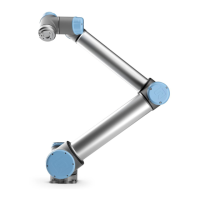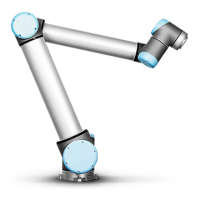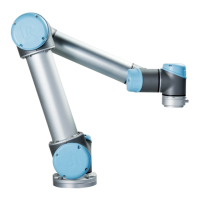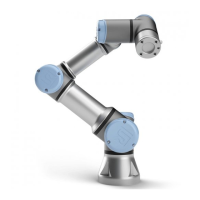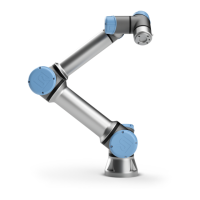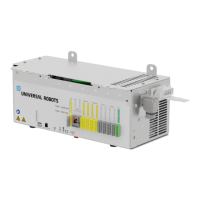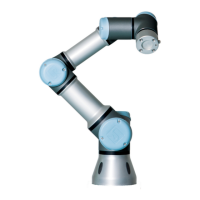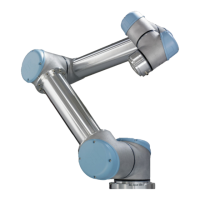Configuring the
Screwdriver
Interface
1. Use the Interface drop-down menu at the top of the screen to
change the displayed content based on signal type.
2. Under Input, configure the signals that the robot receives from the
screwdriver:
•
OK: High when tightening ends successfully, if not selected
this condition is not available in the Screwdriving program
node
•
Not OK: High when tightening ends with errors, if not selected
this condition is not available in the Screwdriving program
node
•
Ready: High when the screwdriver is ready to be started, if not
selected this condition is not checked
3. Under Output configure the signals that the robot sends to the
screwdriver:
•
Start: starts the tool tightening or loosening a screw depending
only on wiring.
•
Program Selection: one integer, or up to four binary signals,
can be selected to activate different tightening configurations
stored in the screwdriver
•
Program Selection Delay: wait time to be used after changing
the screwdriver’s program to make sure it is active
Typical Orientation
values
Values (in Rotation Vector [rad] notation) are illustrated in the following
table.
Screwdriving axis parallel to
the negative Y direction of the
robot’s tool flange1
Orientation
•
RX: 1.5708
rad
•
RY: 0.0000
rad
•
RZ: 0.0000
rad
UR16e 304 User Manual
Copyright © 2009–2024 by UniversalRobotsA/S. All rights reserved.

